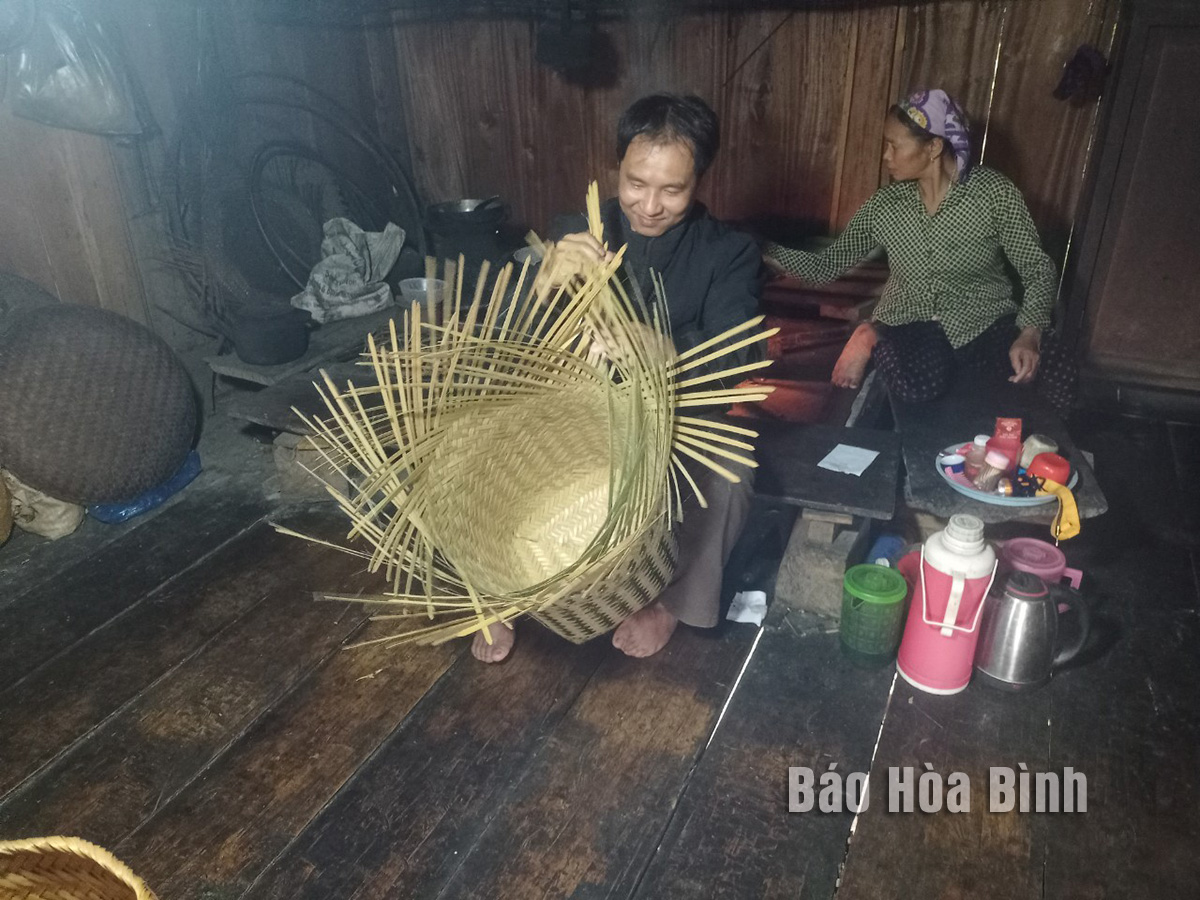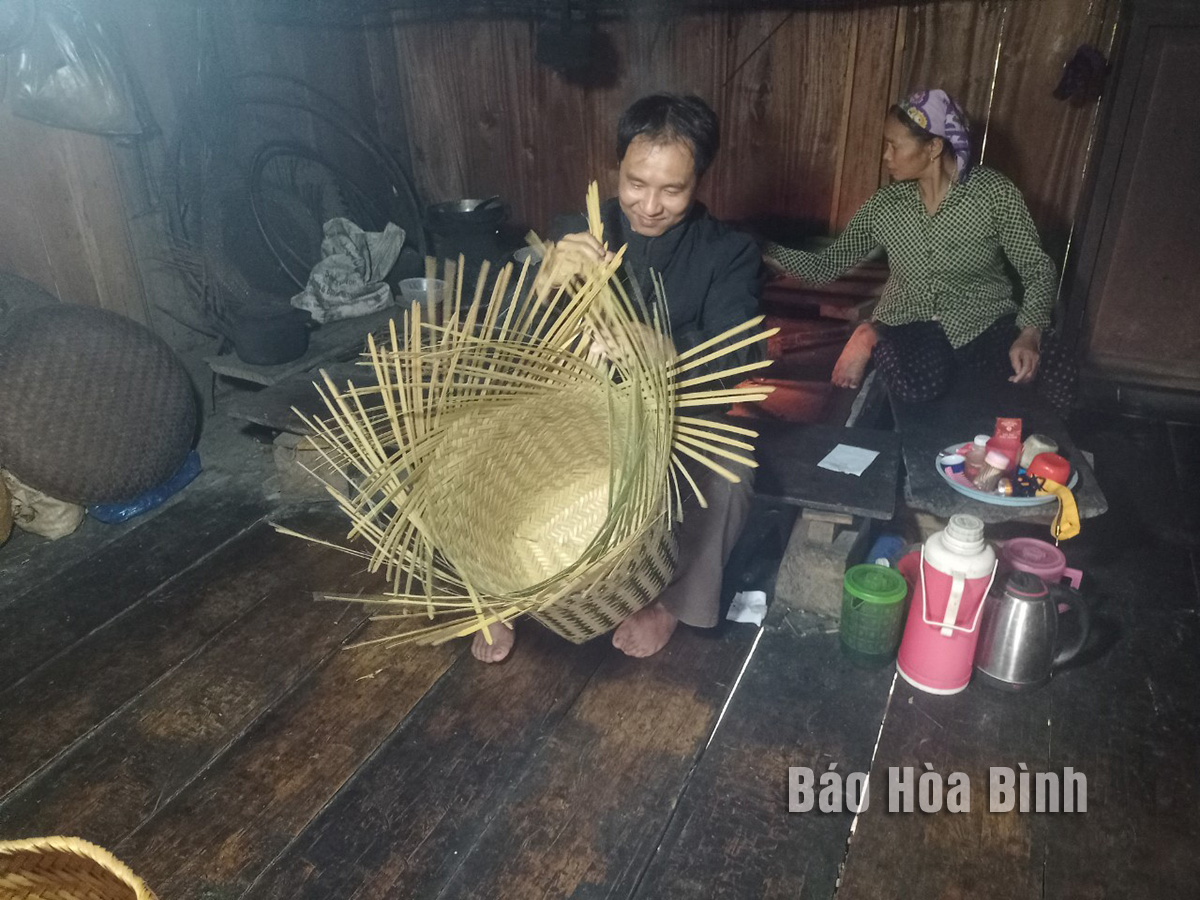



Ha Cong Tien and his family in Huop hamlet, Van Son, Tan Lac diligently maintain the traditional weaving craft.
Dinh Van Tham’s family in Van Son’s Huop hamlet is among those still upholding the tradition of hand weaving. The hands of the 64-year-old craftsman are nimble, skillfully crafting intricate patterns on baskets, trays, cloth containers, and many other household items to meet the needs of his family and supply the market for better income. Tham told us, "The weaving craft here has been around for generations. I have been involved in this work for over 40 years now. It doesn't require too much physical effort, nor is it overly difficult, making it suitable for older men. No one really knows exactly when this craft began, it's been passed down from generation to generation. But to excel in it, you have to be hardworking, patient, and have a knack for it. Passing it down is about preserving our cultural heritage and our ancestral roots. That's why, over the years, even though the income from weaving isn't always high, I still preserve it and pass it on to my children and grandchildren."
Another craftsman from the hamlet, Ha Cong Tien, added, "All needed to create our products exist in nature, but choosing the right ones to make beautiful and durable woven items is not a walk in the park. We have to carefully select bamboo and calameae trees in the forest, ensuring they are at least 3 years old, as young plants are brittle, breaking- and pest-prone. It is necessary to choose thick, long stems for weaving to ensure the products are shiny and durable."
In the past, handwoven pieces mainly served the household needs. In recent years, they have become widely available for sale in markets and tourist areas, favoured by tourists and locals alike. Handwoven products such as various types of baskets and trays are indispensable items at home, deeply rooted in the lives of local women since ancient times.
The recent development of modern technology has led to the gradual decline of traditional weaving. Despite this, there are still individuals like Tham and Tien who use their passion and dedication to breathe life into bamboo and rattan, creating simple yet meaningful products that contribute to conserving the traditional cultural value of the land.
According to Bui Minh Hong, the head of the Tan Lac Culture and Information Office, the weaving craft not only produces material goods but also creates a unique cultural identity for the Muong people in the area. Active support from the authorities is needed to explore the value of these products and make them part of the local tourism.